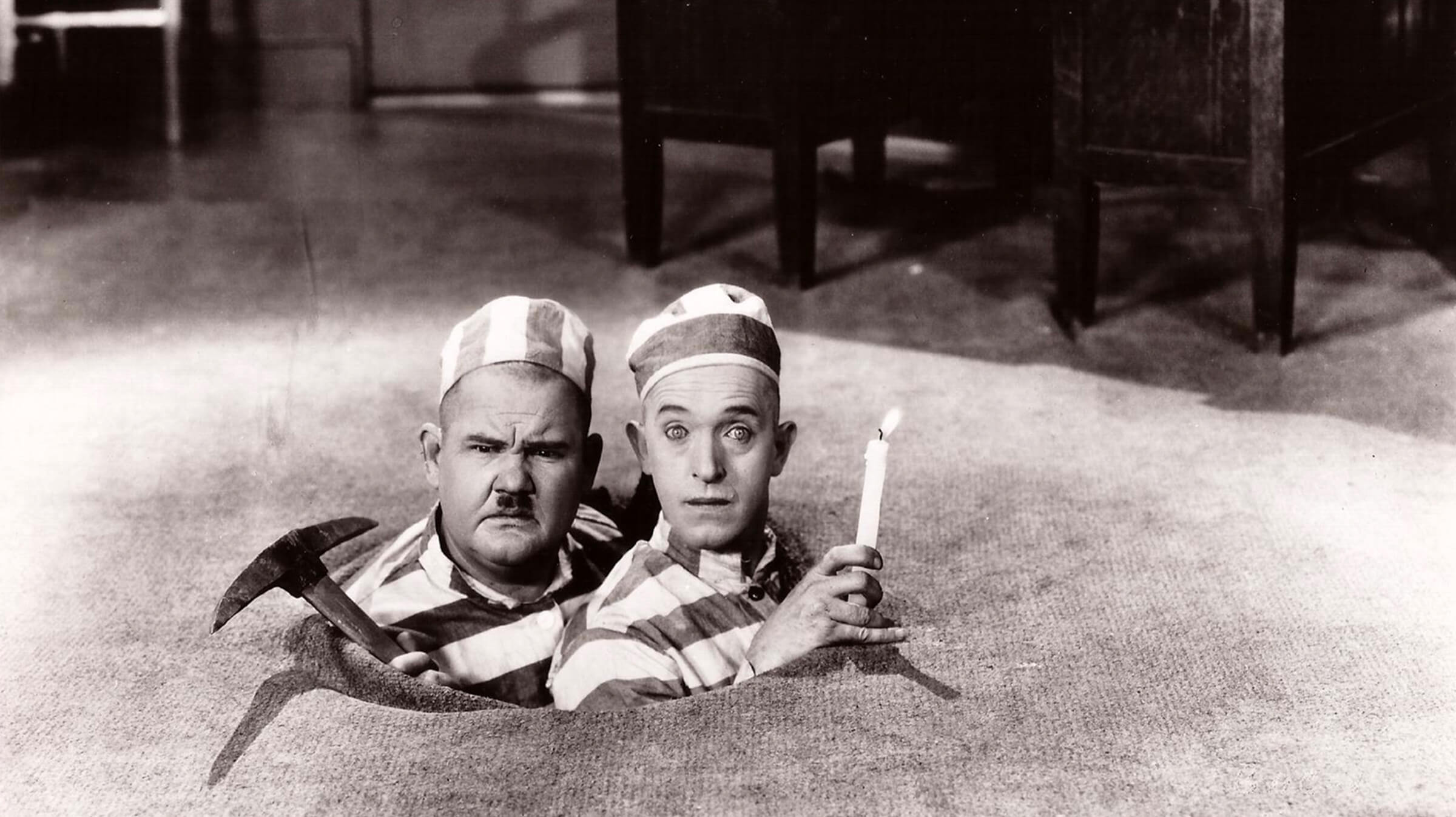
Stan & Ollie
Live music by Wayne Barker with sound effects by Nicholas White
Producer Hal Roach is rightly credited with developing the slapstick duo of Laurel and Hardy. Stan Laurel and Oliver Hardy were in showbiz years before Roach shrewdly matched them up as a team in 1927. These three restored short films chart that hilarious beginning. The Second Hundred Years (1927, d. Fred Guiol, 22 m), Flying Elephants (1927, d. Hal Roach (uncredited) and Frank Butler, 18 m), Battle of the Century (1927, d. Clyde Bruckman, 20 m.)
Source information:
Restorations by Lobster Films, Paris
The Second Hundred Yearsis the tenth film in which Stan and Ollie appear together on screen, but is really the first film released where they were clearly billed as a team, not just as two characters who happen to appear in the same film. Lobster’s restoration derives from a 16mm reduction print from the camera negative produced by Robert Youngson in 1957, now in the Jon Mirsalis collection, and a reduction fine grain in the Blackhawk Film collection. Additional materials used are a 35mm nitrate fragment in the Library of Congress collection and a 35mm fine grain of The Golden Age of Comedy, a compilation film also produced by Robert Youngson preserved at the Academy of Motion Pictures Arts and Sciences (Blackhawk collection).
Flying Elephants was the last Laurel and Hardy short made under Roach’s distribution deal with Pathé, but it was not released until after Roach and the boys had moved to MGM. More typical of the earlier Stan Laurel farces, the film is one of their few silent shorts shot outside of the Roach studio and Hollywood environs. Instead, this prehistoric tale was filmed in Valley of Fire, Nevada. The characters are definitely not yet the team we have come to know and love. The restoration is a jigsaw puzzle that includes material from a Blackhawk safety dupe negative, a nitrate print of the French sound re-release in the Gaumont-Pathé Archive collection, a short nitrate fragment from the Packard Humanities Institute, and a 16mm original Kodascope discovered by Jeff Joseph used to fill gaps of a few frames from one print to the other.
The Battle of the Century was unavailabile for decades, aside from a short pie-fight sequence in Robert Youngson’s The Golden Age of Comedy. The “battle” in the title refers to two different fights. In the first reel, Stan is an outclassed prizefighter. In the second reel, the boys accidentally instigate a pie fight that becomes the largest pie-fight in cinema history, dispensing some 3,000 pies! But all that survived was the fragment in Youngson’s film until an incomplete amber-tinted nitrate print of reel 1 was discovered in the Museum of Modern Art collection in the early 1990s. Gordon Berkow, William K. Everson, and Herb Graff purchased the remains of the Robert Youngson collection and in 2014, collector Jon Mirsalis was working his way through the 2300 titles, prioritizing features and rare films, when he came across a can marked “Battle of the Century R2” and put it aside. Months, later, Mirsalis discovered, to his astonishment, that the can indeed contained the complete second reel. That footage was combined with the first reel material for the now-nearly-complete version.
Live music by Wayne Barker

Wayne Barker has garnered acclaim both for his original compositions and live performances in the theater, including a Tony nomination for best original score on Peter and the Starcatcher. His numerous credits include piano scores for Beth Henley’s Laugh, an homage to silent-era slapstick; and Joe DiPietro’s Hollywood, centered around the 1922 murder of director William Desmond Taylor. He composed for Dame Edna Everage as well as appeared onstage as Master of the Dame’s Music for six years. For the Stan & Ollie program, Barker will be joined by Nicholas White who will create live sound for the films with his collection of antique ‘traps’ (whistles, blocks, bells, ratchets, and anvils).
Details
Director
Fred Guiol, Frank Butler, Clyde Bruckman
Country
United States
Year
1927
Cast
Stan Laurel and Oliver Hardy
Runtime
60 min
Source
Lobster Films
Format
DCP
